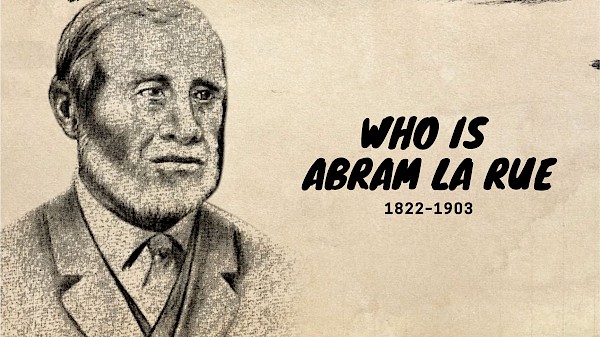Southern Asia-Pacific Division
The official website of the Southern Asia-Pacific Division of the General Conference of Seventh-day Adventists
News
Not Too Young Nor Too Old

Abram La Rue, also known as "Father La Rue," is the first and pioneer Adventist missionary in Asia. He was born in New Jersey on November 25, 1822. When he was 11 years old, he witnessed the meteor shower of 1833, which for him was the “sure token of the coming of the Lord.” This ignited his passion to become a missionary. But his parents brushed off this desire and reasoned that he was “too young” to be a missionary.
He worked as a seaman for fifty years, exploring the thrill of traveling the world. When he retired at age sixty, he invested his fortune in gold mining but unfortunately lost it by fire. This led him to seek God and become a Christian on the island of Hawaii. Abraham, the patriarch, also returned to California to lead a tranquil shepherd's life amidst the mountains. While Abraham was attempting to live a tranquil life, his neighbor Ruel Stickney's wife attempted to dispose of an Adventist tract, which she then gave to Abraham. Abraham took a keen interest in the tract, decided to embrace the message, and became an Adventist on May 6, 1873. For eight years, he dedicated himself to evangelism through literature. Later, W. C. Grainger and another family joined him in his Bible study. When William Healey heard about these interested families, this young minister held an evangelistic meeting that led to the organization of a church in Christine, California. This brought immense happiness to Abram.
At age sixty, he was pursuing a Bible study course or theology at Healdsburg College. However, the leaders believed that he was "too old" to learn a foreign language, and instead, they encouraged him to travel a relatively short distance. In 1883, he expressed to the church leaders his desire to be a missionary in China, but the Foreign Mission Board urged him only to locate in one of the South Pacific islands. Unfazed, he started vending books, dry fruits, and health foods on ships en route to Hanalulu, Hawaii, in 1884. Henry Scott, a fellow college student, later joined him, and they established a free reading room and book depository. S. N. Haskell later found 13 believers and baptized them. The Foreign Mission Board dispatched William Healey to unite these believers into a church that would later operate in Asia. He sailed from San Francisico on board the ship Vilocity on March 21, 1888, and arrived in Hong Kong on May 3, 1888. This two-week travel led one sailor, Mr. Olson from Sweden, to accept the faith. Olson left the ship to assist his new teacher in spreading the positive news. He argued that working in Hong Kong is still fulfilling the Foreign Mission Board’s stipulation, saying, “I have just kept within the borders of my commission.”
Despite the cholera outbreak in Hong Kong at the time, which rendered the mission field extremely unhealthy, he remained focused on his mission. His primary goal was to serve the English-speaking people through his ship-based missionary work. His work, Primary Europeans, not only read his work, but it also reached Mo Wen Chang, a Chinese translator. Despite his inability to learn Chinese, he managed to employ Chang's skills to translate "The Judgement of God" in 1891. He translated two tracts from Ellen White's Steps to Christ chapters, specifically "Sinners Need of Christ" and "God's Love of Man." He traveled as far as the Holy land and His literature reached Indonesia, Malaysia, Borneo, Japan and even the Philippines. He repeatedly appealed to other missionaries to join him. W. C. Grainger soon accepted this call and went to serve in Japan. Recognizing that his advanced age would soon require him to rest and worried about the continuation of his work in Hong Kong, W. C. Grainger expressed regret in 1901, saying, "I am very sorry that I have to give up the ship work, but I am so nearly worn out that I am obliged to do so." The 1901 General Conference sent two missionaries, J. N. and Emma Anderson, to Hong Kong. They arrived on February 2, 1902, and on March 1, 1902, they baptized seven people, all of whom Abram La Rue had prepared. Abram died in Hong Kong. Malaria and typhoid-related pneumonia claimed Abram's life on April 26, 1903, in Hong Kong. Abram La Rue’s grave is located in the Protestant Cemetery (today Hong Kong Cemetery) in Happy Valley.
Pastor Edgar Bryan Tolentino, Spirit of Prophecy Director
Our Beliefs
Seventh-day Adventist beliefs are meant to permeate your whole life. Growing out of scriptures that paint a compelling portrait of God, you are invited to explore, experience and know the One who desires to make us whole.